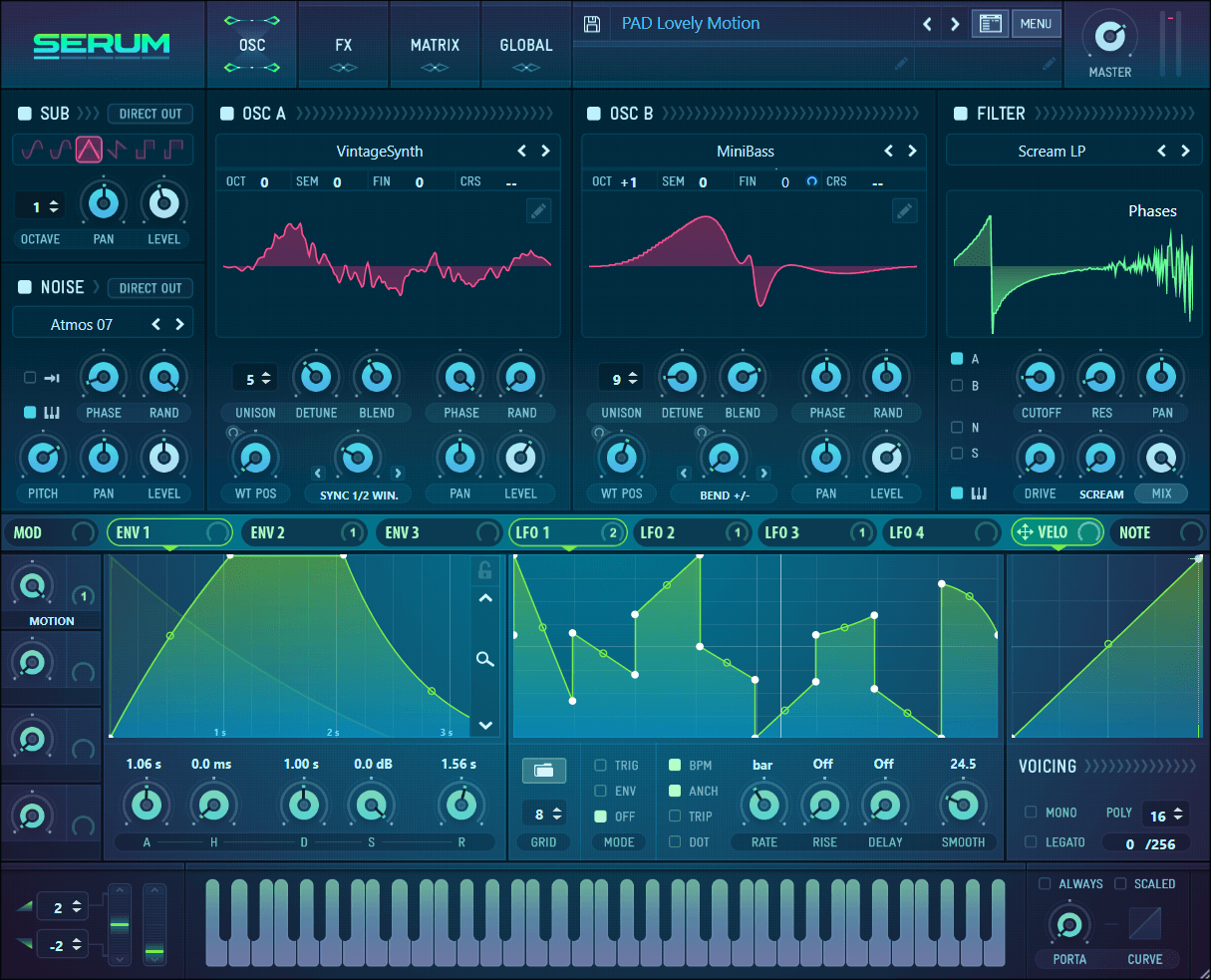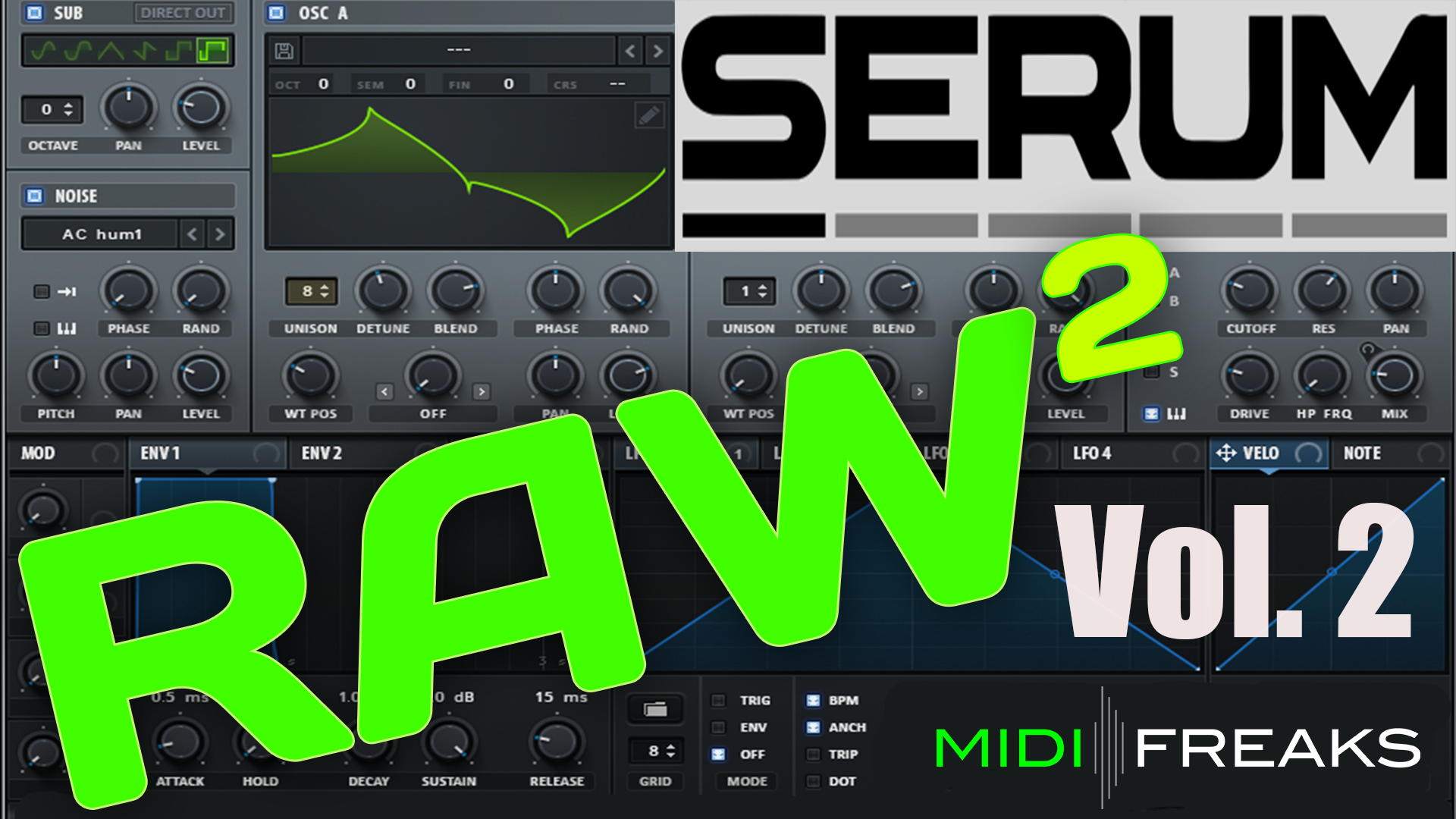
The first step is to load Xfer Serum into your DAW. You would be surprised how much depth and expression can be brought out using these techniques. Don’t be afraid to apply some of these methods in your already made patches. Please follow us through as we explore the individual processes.


This can be assigned to multiple parameters, making even a small change in keyboard pressure a drastic change in the overall timbre of the patch.Īll of these modulations combined will give you a wide range of inconsistencies that will transform your sound from being static into a signature part of your music. Lastly, we can call upon human randomness with the implementation of keyboard velocity. Each new key press results in the sound to be spread across the stereo field. This is also implemented in the famous Prophet 6 analog synthesizer in the form of pan spread. That enables us to achieve a different value of modulation upon each new key press. These are perfect utilities to start introducing randomness into your signal path.Īnother useful modulation source worth mentioning is Note On Alt.
XFER SERUM 2 GENERATOR
In our example we will use Xfer Serum which offers a Chaos generator as well as custom shape LFOs. Modern synthesizers offer a large amount out of the box modulation options. These can add randomness and interest to otherwise static sounds. Having said that, when looking for a signature sound for your music to stand out you will find yourself spending more time working on the finer details of synthesis.ĭuring this step-by-step guide we would like to explore some of our favourite patching techniques that our team uses when designing presets at Audiotent.

Sometimes all a good bass requires is a nice sawtooth going through a Moog ladder filter. Static synth sounds can be very functional and have their place within the composition. Load up Serum and we think you’ll be able to notice both what you hear (solid high frequencies, extending flat all the way up to the limits of hearing) as well as what you don’t hear (no unwanted mud or aliasing gibberish- just good, clean sound).Bring extra dimension to your synth sounds by exploring chaos generator, random LFOs and velocity. In Serum, the native-mode (default) playback of oscillators operates with an ultra high-precision resampling, yielding an astonishingly inaudible signal-to-noise (for instance, -150 dB on a sawtooth played at 1 Khz at 44100)! This requires a lot of calculations, so Serum’s oscillator playback has been aggressively optimized using SSE2 instructions to allow for this high-quality playback without taxing your CPU any more than the typical (decent quality) soft synth already does.

Many popular wavetable synthesizers are astonishingly bad at suppressing artifacts - even on a high-quality setting some create artifacts as high as -36 dB to -60 dB (level difference between fundamental on artifacts) which is well audible, and furthermore often dampening the highest wanted audible frequencies in the process, to try and suppress this unwanted sound. Artifacts mean that you are (perhaps unknowingly) crowding your mix with unwanted tones / frequencies. Without considerable care and a whole lot of number crunching, this process will create audible artifacts. Playback of wavetables requires digital resampling to play different frequencies.


 0 kommentar(er)
0 kommentar(er)
